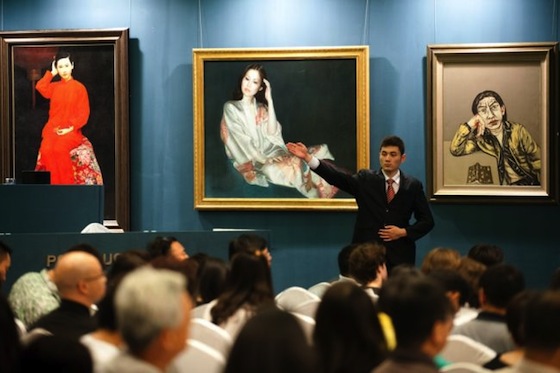Auctions are one of the first methods of trading goods and services and has come a long way from where it began. Although art was one of the first industries to go online, the art auction industry has proven to be resistant to technological change.
The traditional art auctions take place at the respective auction houses, a business model that drives up costs due to for example high costs of real estate and personnel, while also restricting the number of people able to attend auctions due to the travel time and costs. Besides that, potential buyers mainly take notice of the available collection through lavish and costly paper catalogues (Farago, 2015). To attract high value customers, auction houses regularly offer free trips and dinners with the intent to land the more expensive sales.
With the advent of the internet it has become easier for new players to enter the market. Internet also offers sellers an immense reach while also giving buyers the possibility to browse through a large amount of available works. A few players have emerged hosting online-only art auctions in two different forms: consignment and partnership auction models (Chen, 2016). In the consignment model the auctioneer takes (physical) ownership of the collection whereas in the partnership model the auctioneer provides just the platform, with no inventory and storage costs. It is the latter that can present wide ranging collection at a low cost, a long tail effect in the auction market.
However, the duopoly of the art auction market, Christie’s and Sotheby’s has been relatively slow in moving towards the online auction business. Although they adopted a brick and clicks model the online auctions are still simply an extension of the traditional business model. But this position is not sustainable anymore (Jeffreys, 2017). The art auction industry is newly vulnerable because technology has reduced the cost for an extensive global reach. It has become attractive to attack considering the solidifying profitability of the lower and middle segment is, while the high-end segment (focus of the duopoly) is losing margin. The strategy of the duopolies makes it difficult for them to defend their position in the middle-range art market.
While the total value of the art market is going down, the online art market is growing and expected to reach $9.6 billion in 2020 (Karabell, 2016). Online auction platforms like Paddle8 and the Fine Art Bourse bring a new wave of disruption to the art auction industry. By eliminating physical catalogues, auctions and possession of works, the new players can keep the costs down and lower seller and buyer premiums with 15 to 20% compared to traditional auction houses. New, younger customers in a growing lower and middle segment are attracted by with getting well known artists and brands on their platform.
Younger customers will most likely never attend a physical auction, but are willing to buy artworks without hassle. So, it seems like the impact of internet on the auction industry will intensify in the future.
Chen, Y. W. (2016). Attention Economy: The Impact of Digital Marketing on Online Auction Business.
Farago, J. (2015). Going, going, gone: how Sotheby’s and Christie’s still lose out on big sales. Retrieved October 3, 2017 from https://www.theguardian.com/artanddesign/2015/jan/30/how-auction-houses-christies-and-sotheby-lose-money
Jeffreys, T. (2017). Why the fine art auction world is in flux. Retrieved October 3, 2017 from http://www.telegraph.co.uk/art/barnebys-auctions/why-fine-art-auction-world-is-in-flux/
Karabell, S. (2016). The Internet Shakes Up the Art Market. Retrieved October 3, 2017 from https://www.strategy-business.com/blog/The-Internet-Shakes-Up-the-Art-Market?gko=344c3
Picture from: http://www.artmarketmonitor.com/2013/10/09/golden-week-in-hong-kong-735m-in-art-auctioned/

